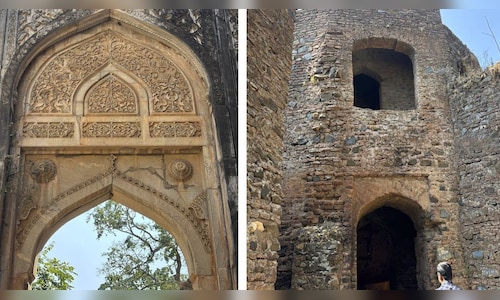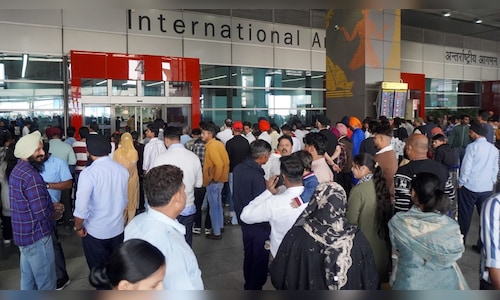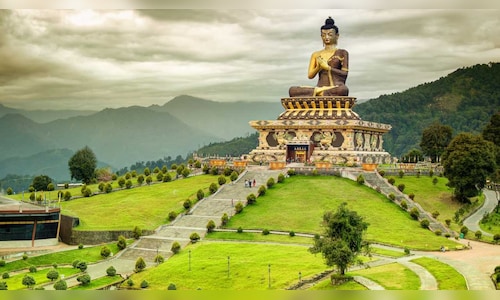A detailed project report for the conservation of the over 400-year-old forts, built by the Chero dynasty, has been prepared and is awaiting final vetting by agencies under the Archaeological Survey of India (ASI). The project will proceed to tendering once the technical specifications are approved.
The restoration initiative, estimated at nearly ₹50 crore, was discussed at a recent meeting chaired by Jharkhand Tourism Minister Sudivya Kumar. Present at the meeting were Finance Minister Radha Krishna Kishore and officials from the state’s forest and tourism departments. It was decided that the contract would be awarded to an experienced agency with a background in archaeological site development, according to an official release.
Also read | Haryana to transform Jyotisar into Mahabharata-themed religious destination: CM Saini
Deputy Director of Palamau Tiger Reserve Prajesh Jena confirmed that the groundwork has finally been laid for the long-delayed project. “All hurdles have been cleared and all stakeholders have given their go-ahead to the restoration project. Once the tender is finalised, the restoration work will begin,” he said.
Nestled deep in the heart of the Palamau Tiger Reserve, on the banks of the Auranga River, the Purana Quila (Old Fort) and Naya Quila (New Fort) lie around 30 kilometres from Medininagar. The forts were originally constructed during the early Mughal period by the Chero kings of Palamu — a powerful tribal dynasty that ruled parts of present-day Jharkhand.

Chero king Anant Rai is believed to have constructed the Old Fort on the plains, fortified with three gates and defences on three sides. His successor, King Medini Rai, built the New Fort on an adjacent hilltop. However, some historians suggest that the Old Fort may have originated under the Raksel dynasty and was later refurbished by the Cheros.
Also read | New Ladakh LG pledges to bring union territory on global tourism map
The Cheros reportedly held off repeated Mughal advances for years before the forts eventually fell to Daud Khan, a Mughal general. The Islamic architectural features visible in the current structure are seen as evidence of this conquest, according to the Jharkhand Tourism Department.
Restoration efforts were first approved by the Jharkhand government in 2005, but the project never took off. Former state archaeology official, HP Sinha, recalled that attempts to launch the project in 2007–08 were halted due to two major obstacles: Maoist insurgency and lack of forest clearance.
“The entire area was affected by Maoist activities at that time. This was a major hurdle. Besides, a certain number of trees needed to be felled for the restoration work. But, we did not get the permission of the forest department for a long time,” Sinha said.
In 2021, a team from the ASI, accompanied by district officials, visited the site to prepare a conservation plan. However, complications arose as the forts are located within Jharkhand’s only tiger reserve, where transferring land to the ASI — a prerequisite for most of its conservation projects — was not legally permissible.
PTR Deputy Director Jena explained the workaround that eventually enabled progress: “When ASI undertakes any work, it requires the transfer of land into its name. Since the forts are in a tiger reserve area, land cannot be transferred. However, we found that while land transfer isn’t allowed, renovation work can be carried out if the DPR is approved under ASI’s technical guidelines.”
The DPR has been prepared by the Indian Trust for Rural Heritage and Development (ITRHD), whose state head, Shree Deo Singh, provided insight into the fort’s historical architecture.
“The old fort is spread over an area of 18 acres and the new fort over an area of 11.5 acres. Stone and Lakhori bricks were used in the original structure. Lime and ‘surkhi’ — finely powdered burnt clay — were used as mortar. The same materials will be used in the restoration of the structure. The essence of the original architectural style will be maintained,” Singh said.
Singh also highlighted the technical challenges posed by decades of neglect. “Large trees have grown on the campus, with roots spreading across the monument walls. The structure is about 40 feet high and around three to four metres wide. If the trees and roots are not removed carefully, they may damage the structure after restoration,” he warned.
The twin forts are currently in a state of severe disrepair, with large sections crumbling into rubble. Their revival is expected not only to preserve a critical piece of Jharkhand’s architectural heritage but also to boost eco-tourism in the Palamau region.
With all major clearances now in place, the project marks a significant step towards safeguarding tribal history and enriching the cultural landscape of the region.





